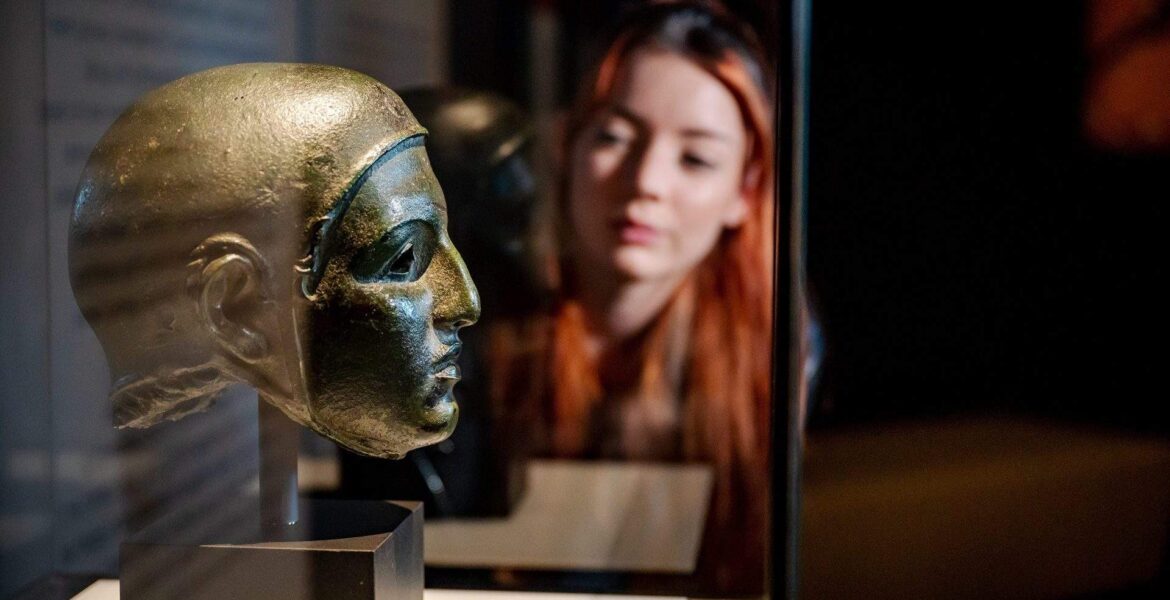The highly anticipated international exhibition Ancient Greeks: Athletes, Warriors and Heroes has officially launched in New Zealand reported the New Zealand Herald.
According to the media outlet, the exhibition, which had been postponed from 2020 opened on Saturday 11 June exclusively at Tāmaki Paenga Hira Auckland War Memorial Museum.
Earlier this year in March the touring exhibition had opened in Australia,
Ancient Greeks is the result of a groundbreaking collaboration between the Western Australian Museum, the National Museum of Australia, and the Tāmaki Paenga Hira Auckland War Memorial Museum, which combined forces to bring the exhibition to Australasia for the first time. Ancient Greeks: Athletes, Warriors and Heroes was on display at the Western Australian Museum from 20 June to 7 November 2021, and will be on show at Tāmaki Paenga Hira Auckland War Memorial Museum in New Zealand until 6 November 022.
Acting keeper of Greece and Rome at the British Museum Dr Peter Higgs said they've always wanted to send an exhibition to New Zealand.
"This is the first time we've been able to send a whole exhibition here so we're really delighted it got here," he said.
"There's been individual loan items to New Zealand before but not an exhibition of 170 objects filling several rooms in this wonderful museum."
The exhibition explores the theme of competition through sports, politics, drama, music and warfare through dozens of artefacts from Ancient Greece.
AUAHA ATEA NUI, SPECIAL EXHIBITION SUITE
$25 ADULT
$12 CHILD (5 - 13), UNDER 5 FREE
$67 FAMILY (2 ADULTS + 2 CHILDREN)
FREE ENTRY FOR MUSEUM MEMBERS - BOOKINGS ESSENTIAL
The Ancient Greeks: Athletes, Warriors and Heroes exhibition from the British Museum’s world-renowned collection from the Ancient Greek world, is the largest selection of ancient artefacts ever loaned by the British Museum to New Zealand.
It will showcase a wide range of treasures and stories, including the masterpiece of the exhibition, a two metre long fragment of marble frieze from one of the Seven Wonders of the Ancient World.
Ancient Greek civilisation has had a profound influence on the development of language, politics, educational systems, philosophy, science, and the arts around the world. Artistic, physical and intellectual competition pervaded all of society and this exhibition, highlights that competition can unify, resulting in achievement and innovation.
This impressive and impactful exhibition is an introduction to an ancient culture that has never before been showcased in Auckland in this way or to this scale.
Don't miss this major international exhibition exclusively at Auckland Museum until Sunday 6 November.
Background
The Ancient Greeks exhibition is divided into six sections: Nike, Goddess of Victory; Sporting Competitions; The Performing Arts; War; Heroes and Myths; Society: Competition in Life and Death.
Key objects include rare and striking items from the British Museum’s Greek collection
- A rare, black-figured amphora showing athletes training for the pentathlon (540–520 BCE)
- A black-figured amphora presented as a prize at the Panathenaic Games in Athens, it was once filled with 45 litres of olive oil. A rare example of its type as its lid has survived intact (333–332 BCE)
- A terracotta sculpture of two young women playing a game of knucklebones. One version of the game was the Aphrodite throw, thought to predict the odds of getting married (330–300 BCE)
- A gilded silver pin showing the figure of Nike, goddess of victory, holding a wreath (never previously toured) (100–200 CE)
- Gold earrings depicting Nike holding discs featuring the head of the sun god Helios (never previously toured) (about 350–250 BCE)
- A Roman version of one of the most famous Greek athletic statues – the Diadoumenos – based on a Greek original by the sculptor Polykleitos in the 5th century BCE. A victor statue and a powerful study of the ideal male physique (about 120–140 CE)
- Bronze head from the statue of an athlete, rare survival of bronze sculpture (never previously toured) (400–350 BCE)
- Marble portrait bust of the famous playwright Euripides, known for writing tragedy (Roman version 69–96 CE, after a Greek original about 330–300 BCE)
- An intricately detailed, red-figured volute krater features scenes from the ancient story that inspired Euripides’ last tragic play, Iphigeneia in Aulis (360–350 BCE)
- A fragment of a sarcophagus depicting warriors, from Klazomenai (modern Urla), Turkey (about 525–515 BCE)
- A bronze cuirass (body armour) modelled with tense, powerful, musculature (about 350–300 BCE)
- A tiny chalcedony gem engraved with the figure of winged Nike – one of the finest examples of a Greek intaglio (engraved gemstone) (never toured internationally) (about 350–300 BCE)
- A large marble statue of an athlete, hero or god, which is representative of the ideal athletic physique (Roman version 1st century CE, after a Greek original 320–300 BCE)
- A finely modelled bronze statuette of Herakles, legendary hero and founder of the Olympic Games (about 400–350 BCE)
- A statue of a wealthy Greek woman carved from fine Parian marble (about 150–100 BCE)
- An array of exquisite jewellery, including a gold necklace featuring myrtle buds and a lion-head pendant (about 450–400 BCE)
- A block from a marble frieze depicting Greeks fighting Amazons. Part of the Mausoleum of Halikarnassos, one of the Seven Wonders of the Ancient World (about 350 BCE)
- A marble charioteer, a fragment of a frieze from the Mausoleum at Halikarnassos (never been shown internationally) (about 350 BCE)


